Coalescing
It’s been two and a half months since my last post which essentially puts me on track (at least for this crazy year) for my schedule of posting. It is not a schedule I prefer but considering the stressors to the nation and our health, it will have to be so. It is a small step taken beyond the usual routine of trying to survive.
That being said, I still am trying to incorporate the techniques and wisdom of John Paul Caponigro into my work flow and understanding of photography. To this point I have purchased four of his digital videos on color theory, photoshop techniques, color strategies and techniques, not to mention printing methods. For me it was a wonderful discovery to find this throve of knowledge. I have watched JPCs videos many times to absorb what seems to flow so casually from him but is quite earth shattering to me. I have listened and have learned. Thank you, JPC.
I have re-created many of my previous photos using JPC’s techniques over the last 2-3 months. The currently posted one is a composition of two photos (actually three) that were re-imagined and recreated to get me to a place I’ve never been before. While I am not totally pleased with it, it does capture the spirit I was trying to achieve when I captured these visual elements.
The currently posted photo was taken at Conimicut Point, Warwick, RI with a Canon DS 5DS, EF100-400mm f/4.5-5.6L IS II USM, F/16, 1/60″, ISO 160.
Opportunity & Transformation
- At May 04, 2020
- By Firstmate
- In Canon EOS 5DS, John Paul Caponigro, Moon, RI
 0
0
My absence from this personal blog is best captured by the phrase, “Still waters run deep.” The New Year brought another bout with a cold which quickly became bronchitis which lasted until the end of March. If that was not enough, events became more dire with the worldwide pandemic of Covid-19. Luckily, I did not contract it. These several months provided an opportunity of time to reflection, re- reading many things on photography especially skill development.
Naturally, photographic style was always in the back of my mind, for I felt unsettled with what I was producing. From the previous posting in December 2019 I knew I was at the cusp of totally crafting my photos differently. During the winter I did a lot of experimenting in how I actually developed the photograph in post-processing. And, in tandem, how I printed the photographs.
The currently posted photo is a result of my transformative thinking about what I was producing. There is some of the style of John Paul Caponigro in it. The shot was taken at Conimicut Point, RI in late September awaiting the sunrise and a moon shot with a prominent foreground of Conimicut Lighthouse.
The photograph was taken using a Canon 5DS using an EF100-400mm f/4.5-5.6L IS II USM lens @ 135mm, f/8, 1/10″, ISO 200, using a Gitzo tripod, and postprocessing with DxO PhotoLab II, ACR, Photoshop CC.
Failed Photo Shoot
- At March 19, 2019
- By Firstmate
- In Canon EOS 5DS, DxO PhotoLab, Milky Way, Nik Software, RI
 0
0
I mustarded all the energy and creative drive within me to go out on a mid-winter’s night to an island in the middle of Narragansett Bay to try to photograph a panorama of the Newport Bridge under the arch of the Milky Way. I had used the app PhotoPills to determine that the Milky would indeed be in this position as it had been. The trouble was that I was shooting to the northeast from Jamestown, RI Center which naturally had the background of Newport and the U.S. Naval Base which was brightly light affording a ton of light pollution to my ill-planned shoot (since I thought this would not be that much of an issue). It was!
The other fact of my failed photo shoot was that I was shooting at c.2:30 AM with a 15º temperature. I thought I was well dressed for the elements, except I underestimated that my hands (not gloved) would be exposed for over an 1 1/2 hour time period. Needless to say, I panicked (to a degree) at that time (at the end of 1 1/2 hrs.) since I did not have any strength in my hands. Luckily by that time I had retreated to my car but still had trouble retrieving the car keys from my jean pocket.
Lesson learned. Do not underestimate the elements, as well as, pay attention to the shooting environment of your target figure (in my case, the light pollution of the city).
This posted panorama was taken with a Canon 5DS, using a Canon EF16-35mm f/2.8L USM @ 25mm with an f/2.8, 20″, ISO 160. These settings are a bit out of the ordinary for shooting the Milky Way but I was trying to adapt to the light pollution. So much so, that I even used a graduated 3-stop neutral density filter to deal with the light pollution. Post processing was done with DxO Photolab 2, Adobe CR, and Color Efex Pro 4.
Addendum: The photo above does not show the Milky Way simply because of my camera settings. At the very least the ISO should have been 3200, and a shutter speed of 20-30″ to capture the stars. I somewhat captured the bridge but at too great a cost of a successfully planned photo. In other words, details matter.
Keeping in Shape
- At July 10, 2018
- By Firstmate
- In Canon EOS 5DS, DxO Optics Pro, Milky Way, Nik Software, RI
 0
0
Since coming back from my most recent journey to Portugal and the Douro River Valley, life has presented to me many personal challenges, testing my resolve on a day to day basis. Without going into detail these issues have resolved themselves and approximately a month later I have been able to spend more time on photography.
Portugal had left me disappointed in not only opportunities to captures shots, but also in my photographic technique in shooting. I had regressed in not being atuned to the technical aspects (basic things as aperture, ISO, shutter speed, good posture for sharp photos) and I was lazy in this regard. One could argue that I had other things on my mind, as I had stated in my last post that simply shooting on a regular European tour presents a myriad of challenges not to be taken lightly.
In any event, I knew I had to bone up and get back into photographic shape. I have tried to do this over the last week or so by attempting to photograph Beaver Tail Lighthouse (which was the third established lighthouse of the original 13 Colonies). It sits on an “island” (or peninsula) of Jamestown, RI. Needless to say, it is a remote area sitting far out away from the mainland and presenting an atmosphere where one feels attuned to the ocean, sky and elements. In other words, it is a special place of nature. However, it presents challenges since the lighthouse is quite bright in revolving (approx. 5″ on, 2″ off). Also, there is some light pollution, especially at this time of year (summer) since the Milky Way (my object of focus) sits in the SE sky where some light pollution exists.
I had tried photographing the lighthouse in the past and was disappointed since the light was too bright. I quickly realized I had to modify my technique. I had been strategizing on this over the last few months, and finally decided that I needed to just go out and shoot the dame thing. I did so the other night under conditions which I thought were perfect. The previous night I attempted to do this but the bugs of summer (July) were a bit much. So, the following night I put on my hiking bug resistant clothes and bug spray and tried again. It was quite a change since there was a stiffer breeze, clear skies, and moderate temperatures, so an enjoyable evening c. 11 PM presented itself to me.
It became apparent to me that I had to improvise on the basic procedure of shooting the Milky Way (I felt I understood the basic technique after shooting Kilauea Volcano in Hawaii at midnight last year). I used two techniques: 1. that proposed by Starry Landscape Stacker, and 2. the basic starry night technique (c.25-30″ exposure, f/2.8. ISO 3200) but this time placing my hat on the lens when the lighthouse light turned towards me (c.2″). Both of these techniques had produced acceptable photos. I then tried using SLSS to process the “hat technique”, and the results were also acceptable.
My gut told me, though, that I should simply use the basic technique, and that is what the current post is. That is, the shot was taken with a Canon 5DS, EF16-35mm f/2.8L USM @ 23mm, f/2.8, 15″, ISO 3200, post processed with Adobe Camera Raw, DxO Optics Pro 11, Nik Color Efex Pro.
Scouting…
- At April 19, 2018
- By Firstmate
- In Canon EOS 5DS, DxO Optics Pro, Nik Software, RI
 0
0
The other day (mid-April) I decided to further refine my photo skills by doing some scouting for future photo adventures. I did this rarely in the past but have come to see that it is an essential part of setting oneself up for successful photographic shots. [I am trying to develop this skill.]
I ventured to Beavertail, RI which sits on the very tip of the Jamestown Island at the mouth to Narragansett Bay. It is a dramatic location since it gets the full brunt of the forces of nature (wind, waves, and climatic extremes). It is the location of the Beavertail Lighthouse, which was the third lighthouse established by the 13 Colonies in the 18th Century, being known then as the Newport Light.
I have often visited this spot over the last 30+ years for in an odd way it is quite meditative. One of my physicians who has photography as a hobby had taken a photo of this lighthouse many years ago in a winter snow blizzard. It is one shot I would like to have had a chance to take. As it goes, the location presents opportunity for many great shots, but the challenge is to meld the elements with the lighting conditions which the landscape presents.
I had taken several successful shots over recent years at this location but one type of shot has been eluding me, namely that of the Galactic Core of the Milky Way with the Beavertail Lighthouse in the foreground. The problem is that the Galactic Core requires a long exposure of 25-30 seconds but in doing so the light of the Lighthouse renders this impossible. I naturally would have to take a shot of the lighthouse in good lighting and meld this with the Galactic Core. But, the crux becomes how best to take the shot of the lighthouse to properly blend the lighting conditions with that of the dark night sky. My latest solution is to try to use a neutral density filter near sunset to approximate the light that may occur at a darker hour when the Galactic Core is captured. Stay tuned.
The current photo is a gratuitous one for while I was scouting Beavertail in weather condition which were not friendly (temperatures in the lower forties with 20 mph winds) a gull appeared just in front on me (4-5 feet away probably thinking I would have a slight morsel for it). I took several shots to capture the capriciousness of nature’s elements and life forces. The photo was taken with a Canon 5 DS, EF16-35mm f/4L IS USM @35mm, f/4.0, 1/500″, ISO 100, post-processed with DxO Optics Pro 11, ACR, & Nik Color Efex Pro.
The End of Winter
- At February 28, 2018
- By Firstmate
- In Canon EOS 5DS, DxO Optics Pro, Lumenzia, Nik Software, RI
 0
0
Today is February 28th, the so-called last day of meteorological winter. I am happy to see Mr. Winter go, but have mixed feelings this year since it was a time of some photographical productivity. I reached my goal of getting out into the elements and also expanded and experimented with various combinations to make the hard to get shot more easy to get, simply based on practice.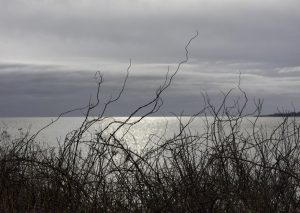
To celebrate this event I am posting a shot of some withered grass and bush on Sachuest Point, RI, which caught my eye in the waning sun on a late winter’s afternoon with storm front clouds moving in. It is quite ordinary, but thought that I could make it extraordinary just to celebrate the moment of beauty.
I used Greg Benz’s Lumenzia extension for Photoshop to craft a luminosity mask to more easily capture the foreground and reduce the water’s glare.
The grasses were shot using a Canon 5 DS, EF100-400mm f/4.5-5.6L IS II USM @ 100mm, f/10, 1/640″, ISO 320, post processed with DxO 11 Optics Pro, Color Efex Pro, and Lumenzia.
Second Best?
- At February 19, 2018
- By Firstmate
- In Canon EOS 5DS, DxO Optics Pro, Nik Software, RI, Sharpness
 0
0
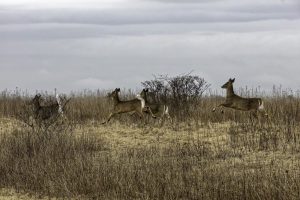 This past winter has cast upon me the challenge to continue my growth by both studying and practicing the art of photography. I have done this with surprising gusto because I did not think it within me. Anyway, I revisited Vincent Versace’s arduous method of producing photographs for “fine art” printing. Vincent’s knowledge of the field has been a guide worthy of a king’s ransom. But, for this poor soul at this stage of my life, I find it far beyond my capabilities and aspirations. However, I have adopted his many insights as an ideal to be aspired to and then use these as a measure to adapt to the current capacities I possess.
This past winter has cast upon me the challenge to continue my growth by both studying and practicing the art of photography. I have done this with surprising gusto because I did not think it within me. Anyway, I revisited Vincent Versace’s arduous method of producing photographs for “fine art” printing. Vincent’s knowledge of the field has been a guide worthy of a king’s ransom. But, for this poor soul at this stage of my life, I find it far beyond my capabilities and aspirations. However, I have adopted his many insights as an ideal to be aspired to and then use these as a measure to adapt to the current capacities I possess.
In counterpoint to Vincent I have also been studying the method of practical photography by Bryan Peterson whom I find as equally adept at creating worthy photographs of the lived world. Bryan’s techniques are capable of being easily utilized in one’s own work flow, at least in actually taking the photograph without any attention to post-processing (in other words, taking a great photo before all else).
This dialectic has left me in the creative tension of trying to choose what best works for me and yet produce the best possible photo I can of a particular situation.
That being said, (i.e., the studying part), I have also met the challenge of getting outside this winter to shoot in conditions with are winter-ish. I must say I am proud of myself, and have actually enjoyed the experience of living on the edge of endurance (a wonderful aside is that it has allowed me to feel completely alive as I used to feel when I was younger and facing the elements).
All of the above leads to the point that I am trying to make. Both of the posted shots are critical existential moments of movement of wild life, i.e, deer running to escape something, and a hawk trying to find a meal. Both of these moments actually occurred in split seconds of the moment, meaning I had to absolutely have the right settings in my camera and the camera had to be responsive to my needs to capture the in-focus, properly framed shot. 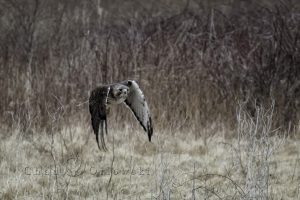
I almost had it! That was my conclusion. Both of the posted shots were hand held and rapidly captured based on subject movement. I thought I was on automatic focus, but there clearly was not a really sharp image captured in both situations. Maybe the subjects were moving too quickly. Maybe not. My point is: You must have responsive equipment based on what you are trying to capture. You must allow for the elements (heat, cold, moisture, fog, light, etc). You have to be ready with your settings based on your anticipated need.
The first photo was taken at Sachuest Point National Wildlife Preserve in Rhode Island at a split second when the deer suddenly appeared. It was taken with a Canon 5 DS, EF100-400mm f/4.5-5.6L IS II USM @ 255mm, f/11, 1/640″, ISO 1000, DxO Optics Pro 11, ACR, Photoshop CC2018.
The second photo is of a Red Tailed Hawk taking off from a field directly in my direction. It was taken with a Canon 5 DS, EF100-400mm f/4.5-5.6L IS II USM @ 400mm, f/11, 1/640″, ISO 2500, post processed with ACR, DxO Optics Pro 11, Color Efex Pro.
More Versace
It’s been a fascinating month of photographic growth.
I embrace this monika phrase (of growth) simply because it capsulizes this process of capturing the ephemeral into a static frame, which is the moving process of understanding the dynamic process of trying to capture the un-capturable. Now, that is a phrase sequence which I wish did not happen. But, be that as was it may, I have re-visited Vincent Versace’s approach to photography…which, in my estimation, is profound in its simplicity.
Be that as it may, I have re-read Vincent’s book, Welcome To Oz 2.0, and have absorbed another 10% of the incredible amount of insight/information in it. This process has allowed me to get to the point of achieving the images I believed I was taking when I pressed the shutter button on my camera. I have another 80-90% of the Versace Process to go, but I am optimistic.
I have found that the Spirit which invades Vincent invades me. I may not have the talents/skills of Vincent, but I will proceed onward.
The current photo is of Occupessatuxet Cove, taken on December, 2017, toward the evening. I like the composition of the shot but the technical precision of the shot is missing. The phot was taken on a Canon 5DS, with a EF100-400mm f/4.5-5.6L IS II USM lens @ 400 mm, f/8.0, 1/160, ISO 640, post processed with Adobe Camera Raw, Photoshop Creative Cloud, using a gradient map and Nik Color Efex Pro.
Transient Moments of Beauty
For some reason the Muses have overtaken me at this most dark time of the year and have seen fit to energize not only my physical body but also my creative spirit. I am amazed at this occurrence, for truly I am repelled from the very cold that has enveloped New England in these winter months. But as I have observed the many creatures of nature and seen that they have embraced the challenge of being outside and facing the brutal elements of wind, temperature, and precipitation, I have become emboldened from their example.
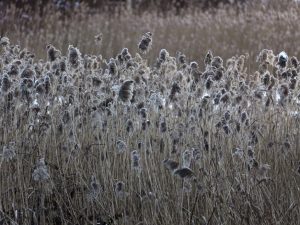 What I am trying to describe is that I have been going outside into the winter elements to capture the fragile and quickly vanishing moments that have been occurring. Naturally, I have chosen the various twilight times, simply because of the muted light, and, from what I discover, the increased activity of the various creatures at this time of day.
What I am trying to describe is that I have been going outside into the winter elements to capture the fragile and quickly vanishing moments that have been occurring. Naturally, I have chosen the various twilight times, simply because of the muted light, and, from what I discover, the increased activity of the various creatures at this time of day.
I have been rewarded beyond what I would have expected, having captured some very special moments of nature. The photo posted here is a very common view of marsh grass, but the hues and shades of stillness were uncommon features the eye may truly miss if not captures by the camera. I have been trying to capture these moments in my latest quest to explore photography.
Without getting too philosophical I will say that I am drawn to the in-between shots or phases of an event that is happening. For example, in regards to a person, if that person is looking at something, and then turns to look at something else, I am interested in the transition phase of the movement (aka photo shot).
The currently posted shot is on the shore of Occupessatuxet Cove, around the time of sunset in mid December — an enchanting time. The shot is of marsh grass (actually an invasive species, not good for the ecosystem). But, attractive, nonetheless. A Canon 5 DS was used, with a Canon EF100-400mm f/4.5-5.6L IS II USM lens @ 400mm, f/5.6, 1/500″, ISO 1600, post processed with DxO Optics Pro 11, Adobe Camera Raw, Photoshop CC (2018), and Nik Color Efex Pro.
Almost Getting It
This did not happen in my last shooting experience. This occurred today at the time of near sun set on a cloudy, windless day, in early December. Birds, geese and ducks were active or flocking, and the opportunities were happening hard and fast in things to photograph. All of a sudden, above me were several Canadian Geese coming in for a water landing. I quickly made sure my camera settings were adequate, and began making a series of shots as the geese approached and then landed. Surely, I said to myself, I must have at least one good photograph.
Unfortunately, if one considers sharpness as a critical element to a good photograph, I did not achieve my goal.
I offer the best of the lot for consideration and analysis in this blog post. I thought the lighting and form/movement/composition of the shot were what I wanted, and I am truly happy with those, but for some reason my camera settings were not adequate to achieving a sharp photograph. Maybe all things being equal, the lighting conditions were at the edge of what was achievable when you consider the fast movement of the landing geese. I will analyze this set of lighting, movement, and camera settings further to refine them so as to get a sharp shot.
The currently posted shot was taken on Occupexatuxet Cove using a Canon 5 DS, EF100-400mm f/4.5-5.6L IS II USM lens @ 400mm, f/8, 1/160″, ISO 1000, using DxO Optics Pro 11 for post processing, with Adobe Camera Raw, Photoshop CC(2018), and Silver Efex Pro.


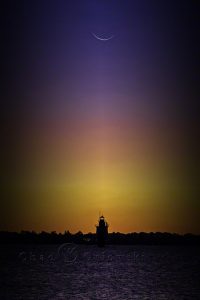
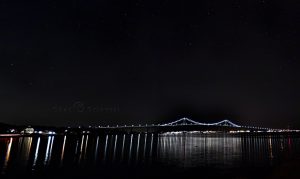
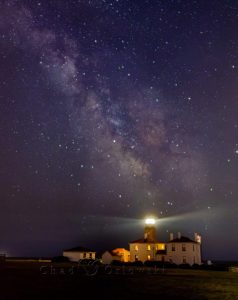

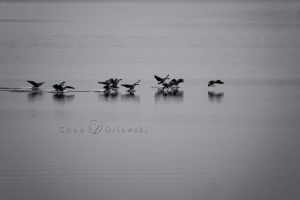 While my comfort and confidence levels continue to grow in taking photographs, the results are not always up to what I expected. Obviously, the elements of a great shot under a range of varying conditions is challenging, but I, nevertheless expect to at least get a good quality shot, at least with the top-notch, Canon equipment I use.
While my comfort and confidence levels continue to grow in taking photographs, the results are not always up to what I expected. Obviously, the elements of a great shot under a range of varying conditions is challenging, but I, nevertheless expect to at least get a good quality shot, at least with the top-notch, Canon equipment I use.
Recent Comments